IN A HURRY? CHECK OUT Microsoft Hololens 2 TOP PROS:
Augmented Reality is one of the most interesting niches of technology. In simple terms, AR is an enhanced version of the physical world.
AR can also be defined as a system that incorporates three basic features: a combination of real and virtual worlds, real-time interaction, and accurate 3D registration of virtual and real objects.
The idea behind AR has been in existence as far back as the early 1900s. Howard Grubb was the first man who brought the idea to life.
But Ivan Sutherland was the first person to create an AR head-mounted display system.
Unlike VR, Augmented Reality is not bound or limited to a headset. Augmented Reality can be attained by the use of digital visual elements.
Augmented Reality alters one’s perception of what is going on in the real world while virtual reality replaces the real-world environment with a simulated one.
It is a field gaining massive attention from top companies dealing with mobile computing gadgets and business applications.
There is no limit to Augmented Reality because this technology is being tested from phones, projectors, and so on!
One major advantage AR has over virtual reality and mixed reality is the fact that it is not bound to any hardware or equipment.
AR can make use of phones, tablets, and computers. Augmented Reality has the biggest potential to gain mass acceptance by the general population.
In this article, we are going to do an objective review of the best AR gadgets we have available for sale today. We’ll also consider the factors you should consider before buying AR gadgets.
Without much ado, let’s consider the best AR gadgets in the tech world today!
CONTENTS:
- Before you buy: 4 things you have to consider before buying AR gadgets
- 8 best AR Gadgets
- Augmented Reality (AR) vs. Virtual Reality (VR): what’s the difference
- Frequently Asked Questions
- Conclusion
Quick Summary
| IMAGE | PRODUCT | DETAILS | |
|---|---|---|---|
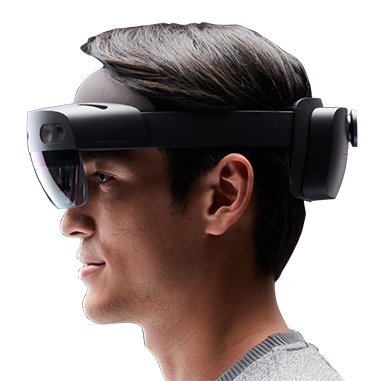 |
Our #1 Choice
Microsoft Hololens 2 |
|
Check on website |
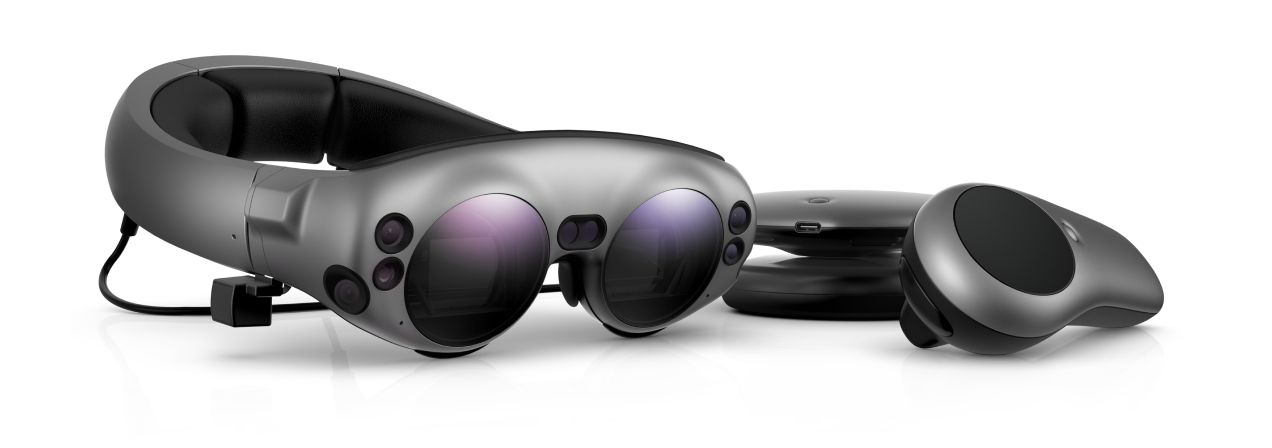 |
Magic Leap 1 |
|
Check on website |
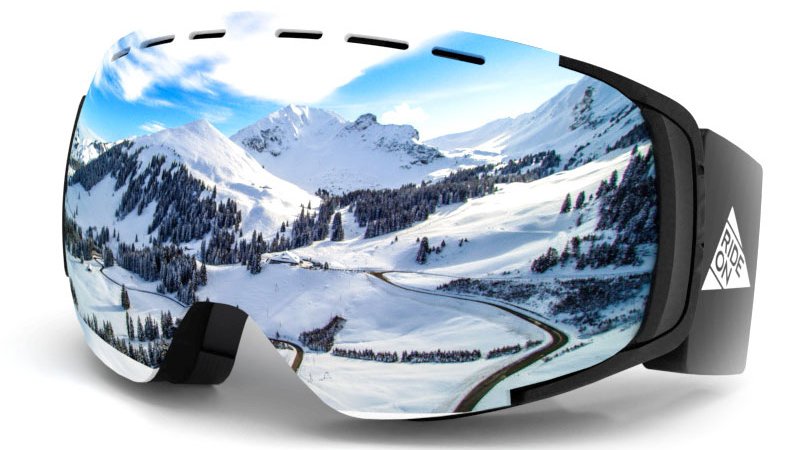 |
RideOn AR Snow Goggles |
|
Check on website |
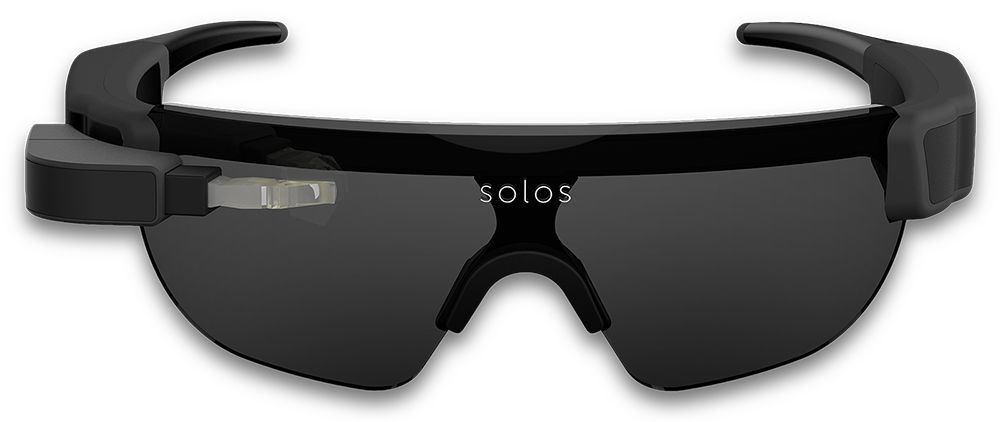 |
Kolpin Solos |
|
Check on website |
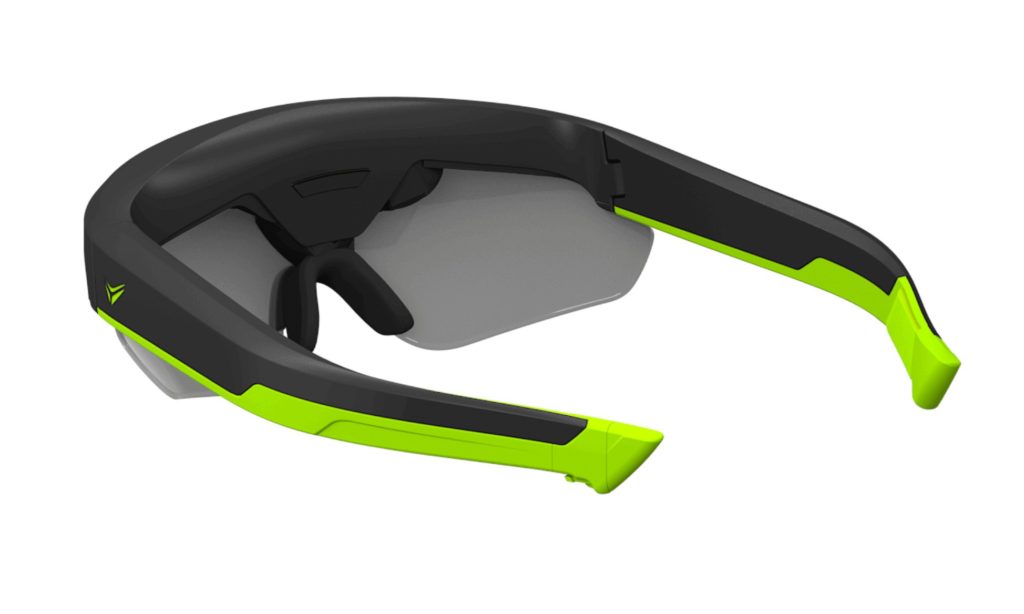 |
Raptor AR Smartglasses |
|
Check on website |
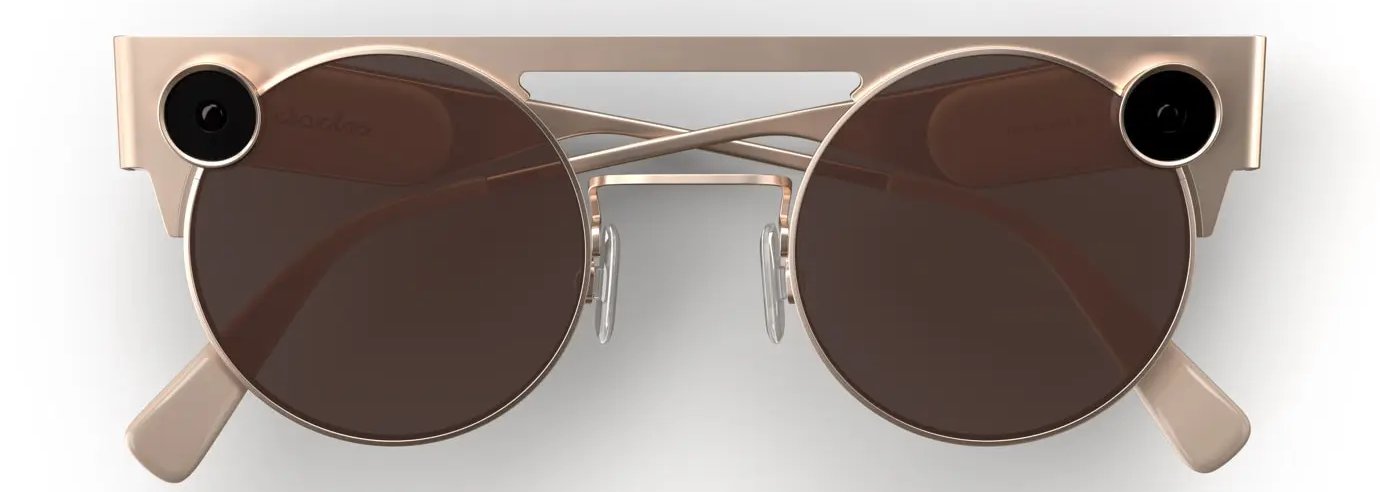 |
Snap Spectacles 3 |
|
Check on website |
 |
First Order Stormtrooper Robot |
|
Check on Amazon |
 |
NASA AR Notebook |
|
Check on website |
Before you buy: 4 things you have to consider before buying AR gadgets
Before you spend your hard-earned money on AR gadgets, you should know that there are different types available in the technology market today.
Apart from the different types of AR gadgets we have, there are some other factors to consider.
The following are the different categories of AR gadgets we have:
Type of AR Gadget
In the tech market, there are different types of AR gadgets, depending on your preferences.
These gadgets are broadly divided into 5 categories; which are:
- Projection-based AR
- Recognition based AR
- Location-based AR
- Outlining AR
- Superimposition based AR
Projection-based AR
The name clearly explains what this type of AR is all about. This type of AR technology projects images on physical objects.
For example, with this technology, you can project a virtual keyboard on your work desk. It is known to create a sense of interaction for the users.
Furthermore, it can also be used to create a projection of how a physical item would fit into a particular space in the home.
Recognition based AR
Recognition-based AR is one of the things we do daily. For example, when you scan a QR code with your mobile device, you are using a recognition-based AR.
We have a variety of AR apps that are designed to recognize AR markers. One typical example is facial recognition apps.
Another popular recognition-based AR technology we have around us is the one that translates words seen via a camera.
Location-based AR
Going by the name, you can guess what this technology is all about. It primarily involves using mobile devices’ location features to detect the location of a user.
If you are a stranger or a tourist in an unknown country, you can use this technology to discover great new places.
Outlining AR
Outlining AR recognizes lines and boundaries to help in areas where the human eyes can’t.
This technology uses object recognition to detect a user’s immediate physical environment.
An example of the application of this technology is found in parking spaces. Outlining AR helps a driver parking in low light conditions to see where the parking space is.
Superimposition based AR
Superimposition AR recognizes a physical object in the physical environment and improves it in a way to create an alternative view.
This technology has been applied in the field of medicine. A physician can use this technology to superimpose an X-ray view of a patient’s broken leg on the real image.
AR is already becoming a major part of our lives. We don’t know what to expect shortly.
We are sure it can only get better. All we can do is wait for the latest type of AR technology.
Cost
The cost of AR is not affected by many factors. AR gadgets are expensive. If you’re planning to develop an AR app, you need to budget thousands of dollars.
Furthermore, most AR solutions today are created as mobile AR apps. The cost of creating your AR app depends on your business idea.
If you’re also not interested in creating a mobile AR app, various AR gadgets are available for purchase at not-so-cheap prices.
Small-level AR would cost you less. While an enterprise-level AR would of course cost more.
Purpose
Before you purchase an AR gadget or develop an AR app, you must understand the purpose of why you are getting it.
For example, there are some AR gadgets specifically designed for athletes and cyclists.
If you are a game enthusiast, it would not make sense to buy a device meant for cyclists. Before you invest your money in AR gadgets, do your research.
Knowing the AR industry would help you in making informed decisions.
Brand
Before investing in augmented reality gadgets, the brand of the gadget you want to purchase matters a lot.
Some brands are more reputable than others. Reputable companies are fond of having a robust warranty plan for their products.
You might not get this kind of warranty plan with less reputable companies. But the ultimate decision still lies with you.
The choice of the brand you choose depends on your budget and the kind of gadget you want to buy.
8 Best AR Gadgets in 2021
1. Microsoft Hololens 2

Unique features:
- Fully articulated hand tracking
- Spatial mapping
- Ecosystem of applications
Overview
This is an augmented reality gadget that provides a unique experience. This gadget brings virtual objects into the real world in an awesome way.
This gadget provides massive improvements over its predecessor. It offers comfort and a wider field of view. The eye and hand tracking features are top-notch.
Out of all the VR and AR headsets our team has reviewed so far, Hololens 2 stands in our top 3 list.
Using the headset is pretty straightforward. Once you adjust the fit using the knob at the posterior part, it feels well balanced.
Microsoft did a good job balancing the weight of the gadget. The sensors are placed in front, while the battery and the Qualcomm 855 SOC are both placed at the rear.
This makes the weight of the gadget perfectly balanced and equally distributed on the head of users.
When our team tested it out, it felt so light on the heat. Although we don’t know how comfortable it would be with an hour of use.
The device is made with quality materials and it has an elegant design. When our team unboxed this gadget, it looked smaller than how it seems in videos.
Although this gadget is mainly targeting the enterprise sector, it can also be used privately by users.
One standout feature of this AR gadget is the Visor. You may choose to flip the Visor up if you feel like walking out of the AR world. The Visor is quite easy to flip due to its lightweight.
Microsoft delivered impressive eye and hand tracking features for the Hololens 2. It’s precise and responsive. Every user’s dream.
This gadget is equipped with six tracking cameras. There are 4 cameras on the lateral part of the headset for positional tracking. There is one at the center of the headset and one below.
When you wear this headset, you get a notification that the gadget needs to record the measurement of your eyes.
What is impressive is that —instead of just measuring the interpupillary distance, the sensors embedded in the headset take the whole 3D scan of your eyes.
The eye-tracking feature also stands out. While wearing the headset, you can get a virtual Microsoft logo tattoo if you focus your eyes on a particular part of your body.
Tapping the logo on your body part would prop up the window’s start menu. This allows you to launch various programs on your computer.
One major advantage this gadget has over its predecessor is the increased FOV. Microsoft has increased it from 16:9 to 3:2 for better viewing.
This also gives users a large space to play. Another thing about this AR gadget is that it examines your environment to provide you with better augmentations.
In simple terms, this device makes virtual objects a part of your real world.
For you to successfully use the hand tracking feature of this gadget, you need some time to get used to it. The tracking is a bit more exacting than normal.
To say the least, the visuals of the Hololens 2 have not lived up to expectations.
Users have commented about the “rainbows” they see while using the headset. While reviewing this gadget, the rainbow colors were inconsistent all through.
One downside of this gadget is that the Hololens 2 hologram is too pixelated. The Vuforia CAD renderings were a bit schematic.
The Hololens 2 is freaking expensive at $3500. This factor has been discouraging a lot of potential consumers from getting this gadget.
Pro tips:
You can give voice commands to this AR gadget while in use. This is useful especially when paired with eye-tracking.
The device understands one-word commands like “open” and “close” better than giving long sentence commands.
If you’re not a native English speaker, the device may find it difficult to decode your commands.
Pros
- Lightweight
- Comfortable design
- Innovative apps
Cons
- Overly expensive
- Pixelated hologram
Bottom line
Microsoft Hololens 2 is arguably the best AR headset you can get in the tech market. Although it has a few downsides, the pros far outweigh the cons.
2. Magic Leap 1

Unique features:
- low-latency and multi-modal input
- Quality graphics
- Haptic feedback
Overview
This gadget used to be the leading AR device before the release of Hololens 2. This gadget provides superb immersion.
This AR gadget does not have the typical AR headset appearance. Anyway, AR headsets are not reputed to have stylish designs. This gadget is not an exception.
This gadget falls somewhere between smart glasses and a VR visor. In addition, this device comes in two sizes, each of the sizes has an adjustable band to fit your exact head size.
The rims of the headset are not well placed, they may somehow obstruct your vision, but overall, the lenses offer a relatively broad field of view.
This AR heads-up display is equipped with sophisticated sensors. The sensors capture the contour and content of your workspace.
The applications are uniquely designed to intelligently integrate into your immediate environment.
This gadget is also equipped with powerful gaming-quality graphics. The precision input and spatial audio level-up training simulation are top-notch.
If you get this AR device, one thing that would likely limit your fun is its narrow field of view. This is an aspect the manufacturers should improve upon.
This gadget failed to live up to the hype. On the bright side, one of the best things about this AR headset is the comfort it offers.
The soft pads embedded with it make it comfortable to use. When we tested it for around an hour, there was no sign of AR-induced nausea.
The light wear glasses do an awesome job. It makes virtual objects look so real. This device might make you believe that virtual objects are real. It plays with your mind.
The limited field of view of this gadget serves as a constraint to the immersion you can experience with it.
Some objects might appear cut off when you wear this gadget, to see those objects clearly, you would have to turn your head.
Although the Microsoft Hololens has a wider field of view, the magic leap one offers crisper and better graphics.
When our team reviewed this AR headset, we felt that this device is targeted at developers for them to get a glimpse of the augmented reality future.
Another major downside of this gadget is that it is not compatible with eyeglasses. If you use prescription lenses, you should have a rethink before buying this device.
The controllers somehow have the shape of an oversized thumb. The controllers have a touch-sensitive trackpad that allows users to navigate through the menu.
One advantage of this gadget is that it is untethered. You don’t have to rely on an external computer to play the games you love.
To power the simulations, you need a round shape device you can attach to somewhere around your waist. This round-shaped device is connected to your headset via a cable.
A headset that doesn’t shut you off totally from what is going on in your surroundings is becoming the real deal. This is exactly what the Magic Leap 1 offers you.
It simply makes digital images real. The astronomical price of this gadget is simply a turn-off at $2,245.
Pro tips:
Magic Leap device was designed for indoor use in normal lighting conditions. Bright sunlight or dark rooms may impact performance.
We suggest using it in rooms with fewer mirrors, windows, or black surfaces to allow applications and experiences to more accurately interact with your space.
Pros
- Comes in two sizes
- Comfortable to use
- Natural user experience
Cons
- Narrow field of view
- Expensive
- Not so great design
Bottom line
A great AR gadget to have. If the manufacturers can improve on certain parts of the headset, it would make a near-perfect gadget.
3. RideOn AR Snow Goggles

Unique features:
- Lightweight & aerodynamic shell
- HD camera and video recording
- Dual, anti-fog, anti-scratch, UV400
- 24° (diagonal) viewable area
Overview
This is the world’s first augmented reality (AR) ski goggles.
With these goggles you can see the map of your favorite ski resorts, you can capture your adventure with its camera.
The goggles also allow you to check out your speed and a lot more. And everything is controlled hands-free in your field of vision!
These goggles are made to improve your ski adventure and enhance the way you interact with the surroundings.
These AR goggles were made from high-quality materials to enhance your ski experience. These AR goggles combine style and comfort astonishingly.
These smart glasses are equipped with smart features. For example, it has an inbuilt HD camera that captures your best moments while skiing.
These smart goggles allow you to record your thrilling experience and watch it at a later time.
One thing we love about this gadget is that it uses your customized stats to improve your performance while skiing.
These goggles transcend a mere novelty gadget. It is also designed to keep you safe. The smart features of this device can automatically detect motions. When motion is detected, it changes to riding mode.
When in this mode, you can’t answer calls or receive text messages until you exit the riding mode.
The goggles are also equipped with 3 layers of padded foam that gives immense comfort. The padded foam is also meant to protect your head against injury.
These AR goggles permit its users to throw virtual snowballs at one another in the AR mode. This makes your skiing experience more fun.
The field of view offered by this product is impressive. Users get to see a wide view at once without having to turn their necks.
These smart glasses use a variety of orientation sensors, an HD camera to deliver impressive real-time features.
When we reviewed these Snowy goggles, we found out that it is designed to work independently. You don’t need to connect to an external mobile app before it works.
Furthermore, this gadget’s interface is hands-free and it is controlled with your eyes.
Smart AR glasses like this one offer a bright and vivid display. The wide view of these glasses helps you to see objects around you with ease. In terms of safety, this AR gadget is impressive.
This gadget stands out from other similar products in the sense that it provides an opaque display in peripheral vision for users.
These goggles would not by any means make you a better skier, but at least you can have fun while skiing.
One of the downsides of this gadget is the price at which it is being sold. Although it offers premium value for those that can afford it.
Pro tips:
Wearing the goggles – Always adjust the head strap while the goggles are on and working to fix
the see-through display over your right eye.
- Make sure goggles are ON.
- Wear your helmet (safety first!).
- Loosen the headband, and wear the goggles around your helmet.
- Tighten goggles’ headbands so that they fit your face snuggly yet comfortably, and won’t slip while skiing.
- Finally, check that the see-through display’s projection screen is visible in your right eye.
Pros
- Hands-free user interface
- Rider data (shows speed and altitude)
- Resort app
Cons
- Not-budget friendly
Bottom line
If you love skiing, RideOn AR snow goggles are a wonderful gadget to have. It’s easy and comfortable to use. Although the price is relatively on the high side at $899. It offers great value for money.
4. Kolpin Solos

Unique features:
- 6 degrees field of view; 400 × 240 pixels resolution.
- Visual data display
- 3-button tactile input
Overview
These AR smart glasses boast a screen that monitors your heart rate, and other key stats.
It is specifically designed for cyclists and runners, and other outdoor enthusiasts. The manufacturer of this product is based in the US.
It provides a measure of cool stuff like speed, power, elapsed time, and so on. These smart glasses feature a transparent display. With this transparent display, you can observe what is going on.
What makes these glasses popular among athletes is that it is lightweight. It is possible to monitor the display glasses.
These smart glasses make communication possible through calls. You can make your ears free by answering calls through the hands-free speakers.
These smart glasses are designed to provide balance and comfort. It allows athletes to focus on their sports, meanwhile, it records key stats.
These glasses remove the need for athletes to look down or break their strides. The glasses even tell you when to take a turn while riding.
These glasses are equipped with an advanced pupil display. The screen delivers an animated and sunlight-readable image to maximize visual clarity.
One of the stand out features of this gadget is the long battery life. According to the manufacturers, when on a full charge, it can last up to 5 hours.
When our team tested these AR glasses, on a 2-hour ride, the battery went from 100% to 55%. We feel there’s a little bit of exaggeration with the 5 hours tag.
These smart glasses enable you to listen to music while running or cycling. It has an audio guiding feature.
One major downside of these glasses has to do with the quality and clarity of the sound being produced by them.
Pro tips:
The smart glasses can be paired with Solo’s companion apps when going on a ride. These apps make use of GPS data on your phone.
The above can drain your battery quickly, make sure to carry an extra power pack with you on a long-distance ride.
Pros
- Ride voice control
- Fully adjustable heads-up display
- Lightweight
Cons
- Hard to read the screen while running
- Not budget-friendly
Bottom line
These AR glasses are light and comfortable to wear. Although a bit pricey, these glasses remain a top choice among athletes. If you are looking for cutting-edge technology that doesn’t live on your handlebars, this is a gadget for you!
5. Raptor AR Smartglasses

Unique features:
- Waterproof
- Proximity Sensor
- Voice control
Overview
Raptor is designed to enhance every ride by projecting an unobtrusive AR layer of information out in front of the cyclist’s eyes.
It is manufactured by an Israeli firm known as Elbit. A firm that specializes in the manufacture of military helmet-mounted displays.
This gadget is its flagship product. A gadget made for the masses. This product lives up to the hype.
This gadget can display data like distance, power, and cadence in front of a user’s eyes.
It has an embedded GPS to map your routes. This navigation system helps a cyclist to always find his route.
This gadget is priced at around $645. This is around the same price a smartphone is sold.
If you are an outdoor sports enthusiast, you would likely find this gadget appealing. With this gadget, you don’t have to bend your neck down to stare at your bike computer.
This gadget comes in two colors —electric green and stealth black. If you don’t like bright colors, stealth black might be perfect for you.
When you unbox the package, the first thing you would notice is how heavy the glasses are.
In comparison to other similar AR glasses, it is quite heavy. One of its downsides. The lightness has been sacrificed for all its new features.
If you are looking for AR smart glasses that are lightweight, this product is not the best choice for you.
Although these glasses weigh more compared to other glasses at 98g. It comes with a nose arc adaptor. You can always adjust this to suit you.
One of the interesting features of these glasses is the ability of a user to download workouts on this device and use the raptor to guide you all through the journey.
Voice control is another awesome feature that has proven useful for owners of this gadget. You can easily give a voice command and your glasses would obey.
You can give commands like “Take a picture” or “record video”. These smart glasses find it difficult to obey sentence-type commands.
The battery life for Raptor is 8 hours. But upon closer look, that sounds a bit like an overhype.
We subjected it to a test, after a 2-hour ride, the battery dropped to 50%. For the battery to last up to 8 hours, you have to turn off the GPS and not make any video.
Therefore, a realistic estimation would be around 5 hours.
If you need more space to store your data, these smart glasses come with 16GB and 32GB options to choose from. If you need more space, the 32GB device would be a better option.
Pro tips:
If you don’t like having a silent bicycle or bike ride, or you need some music while cycling, all you need to do is upload your music playlist to the hardware to enjoy your favorite music.
Pros
- Water and dust resistant
- Equipped with GPS for easy navigation
- Compatible with iOS and Android devices
- Up to 8 hours of battery life
Cons
- Videos can only be recorded for 60 secs
- Heavier than most standard glasses
Bottom line
In terms of cutting-edge technology, the Raptor is one of the best glasses you can lay your hands upon. Although it is slightly heavier than standard glasses, it provides great value for money.
6. Snap Spectacles 3

Unique features:
- Built-in GPS and GLONASS
- 50% quick charge in about 15 minutes
- 4GB flash storage
Overview
These sunglasses come in two colors —in black “Carbon” or rose gold-ish “Mineral” color schemes on Spectacles.com.
It is equipped with two stereoscopic lenses. These lenses are capable of capturing 3D videos and photos.
The package also comes with a USB type C charger that powers up the glasses. When you buy this gadget, you also get a Google Cardboard-style VR viewer.
This gadget is designed to target consumers who are pretty excited about the effects generated by this product.
According to Matt Hanover, a member of the SnapLab team —”Spectacles 3 is a limited-production run. We’re not looking for massive sales here. We’re targeting people who are excited about these effects — creative storytellers”.
Spectacles 1 was designed to get people accustomed to wearing tech on their faces.
While Spectacles 3 is made for people to capture their world in 3D. A big difference!
The Spectacles 3 has not recorded much success in the tech industry. The company is losing about $227 million per quarter.
If you’re a videographer, you may not mind getting these sunglasses for $380. But getting it for the sake of novelty at the same price might be worth giving a thought to.
But one thing we love about these eyeglasses is the fact that you can wear them around just like any other glasses.
Wearing them feels comfortable. Wearing them around doesn’t draw much attention, unlike the Google Glass.
Another good thing about this product is that anyone can build 3D effects for it. We might start seeing different filters soon.
If you’re a big fan of first-person camera glasses, we recommend going for the Spectacles 2. It is still available for sale.
The 3D features of the Spectacles 3 are not worth paying $380 for —in our opinion. The Spectacles 2 goes for around $150.
When we tested the software for this product, we were a bit disappointed, to say the least. But you’d surely be impressed with the packaging.
Opening the package gives you a sense of opening a futuristic gadget. How the glasses magnetically dislodge from the case is quite impressive.
With its 4GB storage, you can save up to 100 videos and 1,200 photos. It is also equipped with a GPS to navigate through your route.
Pro tips:
To record a video for 10 seconds with this gadget, tap the button on either arm of the glasses. Multiple presses would take it to 60 seconds.
Pros
- Good video and audio quality
- 3D Viewer is a fun way to view photos
- New effects are possible with a second camera
Cons
- Poor launch filters
- Not budget-friendly
Bottom line
The Spectacles 3 are pricey to be a toy. If you are into videography, it would come in handy. It’s overpriced for the value it renders.
7. First Order Stormtrooper Robot

Unique features:
- Facial recognition
- Voice command
- Sentry patrolling capabilities
Overview
The Stormtrooper robot comes with a companion app that is AR equipped. This 11-inch robot can patrol your room if you want it to.
You can play a simple game with this robot by using the facial recognition feature. Although the facial recognition feature is not functional as it should be.
We sincerely hope the manufacturer of this AR gadget will make the necessary changes with the next software update.
The robot has the structure of the human body. A pair of hands and a pair of legs. The package of this product also comes with a mini rifle.
You may choose to stick the rifle to the hand of the robot if you wish. The fingers’ of the robot do not move.
So the idea of sticking a gun in the hand of your robot is merely for decorative purposes.
The robot is designed in a way in which the gun doesn’t point at people.
The robot is also equipped with microphones and speakers. The mic and the speaker give the robot the ability to receive and obey commands.
There is a hidden camera that is quite difficult to spot on the robot. This camera gives the robot the ability to have a wide area of view in a given space.
At the bottom of the robot, a few sensors are located there. The main function of the sensors is for the robot to know when it’s nearing an obstruction in the home.
When the robot detects an obstruction, it automatically stops itself.
To control this robot, you’d need to download the companion app either from Google Play Store or Apple Store for iOS users.
To control the Stormtrooper Robot, you need a device running on iOS 11 or higher. For android users, Android 6.0 is the minimum requirement. The minimum device memory requirement is 2GB of RAM.
One downside we noticed while reviewing this product is the poor facial recognition feature. We had to scan our faces several times before we had success with it.
The companion app for this device gives you 3 modes to choose from (Sentry, training, and mission). Each mode has its unique features.
Another not-so-good thing we noticed is that the app doesn’t allow users to take photos and videos of the robot while in use.
The gait of the robot was more stable on smooth surfaces except on a carpeted surface. We noticed some waddling.
Pro tips:
Users can manually control the robot using some arrow buttons found on its body. Using this, you can make the Stormtrooper walk around the whole room.
Pros
- Attractive design
- Long battery life
- Voice recognition
Cons
- Can be better. It doesn’t do a lot
- Relatively expensive
Bottom line
The idea behind this gadget is quite impressive. But for now; it doesn’t do much. Especially for its price. We can expect improvements in the future.
8. NASA AR Notebook

Unique features:
- Acid-free paper
- Spacecraft exterior
- Premium binding
Overview
This notebook is designed to honor the 60th Anniversary of NASA. The Notebooks come in two colors: Glacier White and Titanium Grey, which are inspired by the spacecraft exterior.
Glacier White is symbolic in honoring the simple and powerful spirit of human space exploration.
NASA Titanium Grey is symbolic of the color of Spacecraft metal.
The Notebook includes features like premium binding, memento pouch, black ribbon marker, and protecting packaging.
The memento pouch helps users to keep documents and flashcards. While the premium binding quality allows the notebook to lay flat while in use.
Another interesting thing about this notebook is that it includes 192 high-quality, acid-free paper blank pages for note-taking, sketching, and journaling.
With this AR notebook, you can watch the virtual interaction about our solar system.
The interactive user interface creates learning opportunities and creates a new sense of immersion.
If you’re a fan of astrology, you would find this AR notebook useful.
With this notebook, you can easily learn about the history of NASA from its origin in 1958 till the present moment.
For the app compatibility, it requires iOS 9.0 or later, or Android 4.3 and up
Pro tips:
To use this notebook, scan the notebook through the AstroReality Explorer app, point your device’s camera at the front cover of the notebook to activate.
Pros
- Budget-friendly
- Notebook is solid and durable
- Great for those who love to jot in an old-fashioned way
Cons
- We hardly found one
Bottom line
This technology creates a whole new kind of immersive educational experience. If you’re a big fan of astronomy, you should get yourself a copy!
Augmented Reality (AR) vs. Virtual Reality (VR): what’s the difference?
Many people are curious about the difference between VR and AR gadgets. It is not surprising because we hear and see these two words almost every time.
Now, let’s break it down.
Virtual reality (VR) and augmented reality (AR) share a lot of similarities. But both are two entirely different concepts.
In simple terms, virtual reality replaces your vision while augmented reality adds to it. In contrast, AR gadgets do not replace your vision.
Most AR gadgets we have do not replace users’ vision. Most AR smart glasses we have around are transparent allowing users to see their environment.
AR technology is designed to project images over things and objects you look at.
The concept extends to smartphones with AR apps and games, such as Pokemon Go, which use your phone’s camera to track your surroundings and overlay additional information on top of it, on the screen.
Furthermore, AR displays can be simple and at the same time complicated, depending on the gadget you are dealing with.
AR gadgets can provide something as simple as an overlay that shows the time. And you can as well have something as complicated as the hologram.
One advantage VR has over AR is visual immersion. VR completely blocks the physical world, replacing it with a virtual one thereby leading to immersion.
AR gadgets designed for smartphones are widely available for purchase today. But these gadgets do not boast of the same features as enterprise-level AR gadgets.
VR and AR get two things done in two different ways despite having similar designs. VR replaces reality, taking you into an entirely different world.
Augmented reality on the other hand enhances reality, adding to the effect of the image or object you are looking at.
Frequently Asked Questions
What is required to use AR?
Augmented reality requires understanding the world around the user in terms of both semantics and 3D geometry.
Without geometry, AR content cannot be displayed at the right place and angle, which is essential to make it feel like part of the physical world.
What is AR used for?
Augmented reality (AR) is an experience where designers enhance parts of users’ physical world with computer-generated input.
Designers create inputs—ranging from sound to video, to graphics to GPS overlays and more—in digital content which respond in real-time to changes in the user’s environment, typically movement.
Is my device AR capable?
Newer device models will have AR software already integrated into your phone. Make sure you are running iOS 11.0 on your iPhone or have the ARCore app installed from the Google Play Store.
Requirements for ARCore for Android: Android 7.0 or later (some devices will need at least Android 8.0 for ARCore to work)
Conclusion
The future of Augmented Reality looks so bright. The market for AR is estimated to be worth $15.3 billion. This figure would most likely continue to increase.
The market of AR technology is projected to likely grow by 1.73 billion by the year 2024. It can only get better!
Which AR gadgets do you currently own? What have been your experiences so far with them? We can’t wait to read about it in the comments section below!
YOU MIGHT ALSO LIKE:
What is AR and How Does it Differ From VR


